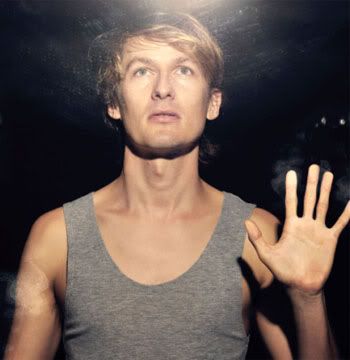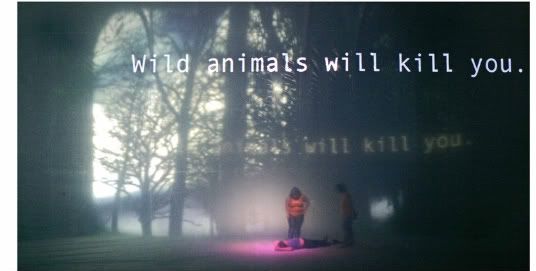
Written By Mary Zimmerman
Adapted from The Book Of The Thousand And One Night
Directed By Tim Maddock
Assistant Director Mark Rogers
The first thing one notices about Arabian Nights is the space in which it is performed. The Hope theatre used to be a large, proscenium arch, 500-seat theatre. Whilst it was mainly used for lectures, it also housed a number of performance works and was certainly the largest space the university had to offer. It was a “traditional theatre” with side stage space, a massive fly area and an orchestra pit, a very different experience to the black-box style spaces the majority of our work is performed in. The stage area often acted as a rehearsal space while lectures continued on the other side of the fire curtain. Recently however, the performing licence ran out, and the decision was made not to renew it. I should say that I am certainly far from privy to any of the details of these decisions, but these are the events as I have been told them. The fire curtain has been replaced with a wall and the majority of the rigging has been ripped out. Soon the space will be divided into two levels and it will become a new rehearsal room and sound studio, but currently it is simply a massive concrete room. It has the same feeling of depth and height that Carriage Works offers, yet with an impressive informality that only a space you are forced to enter through a giant loading dock roller door can have. The stark concrete walls provide a surprisingly beautiful aesthetic, and as you enter on to the stage space and walk past the technical crew and then in turn the performers, who are all simply milling about on stage playing with pillows and doonas you feel strangely comfortable as you are guided to the opposite end of this vast industrial room.
The comfortable feeling makes sense, as you soon realise you’ve paid to come to an awesome sleepover. The performers lie about on the ground, and then gradually get up and do party tricks. The scene quickly turns awkward when two girls manage to fit their fists inside their mouths, and you realise that there are two people having sex at the front of the stage under a doona. The participants are revealed and violently dealt with, and thus begins the story of the Arabian Nights. Adapted by Mary Zimmerman from The Book of The Thousand And One Night, it is the story an Iraqi caliph Shahryar, who having been cuckolded by his first wife, now weds, beds and murders a different virgin every night, and the brave Scheherezade, his intended bride, who postpones her execution by telling the caliph wonderful tales, stopping tantalisingly short of their conclusion just before dawn.
The ensemble of 16 performers (my year) bring a youthful energy to this fable, as over the course of two hours using no more than a few sheets, doonas, pillows and a guitar they bring Scheherezade’s stories to life. Having been a performance student at the University of Wollongong for two and a half years now, I have both seen and performed in my fair share of ensemble work. With year groups ranging from 25-50 people, finding texts to perform is never easy and often ensemble investigations are seen as a more practical alternative. In some cases, I have seen this approach forced on texts which do not necessarily welcome it, however with Arabian Nights the text is elevated because of it. The stories serve as springboards for the image work that the ensemble and director Tim Maddock have created, whereby the performers make the work their own. It proved a delight to watch the unique talents of my colleagues being utilised to full effect. This ownership also went some way to removing the connotations of words such as Baghdad and phrases like “By Allah”, that we have heard bandied about in the press so often in recent history. This production is about people not place. The decision to avoid comment on Iraq is a good one in my eyes, because the material within the text is not strong. Short of some “Muslims are people too” moments, the play does little to try and deal with the issues, and Zimmerman’s intended ending of air raid sirens and the cast stopping, dropping and rolling is thankfully avoided (although possibly the most amazing deus ex machina I’ve ever seen is not). The fun filled first act is particularly successful in this, but when in the second act we hear a lecture about how many words there are in the Koran, one can’t help but feel the words “Iraq” and “Islam” flash across their eyes in big red letters.
While the space provided a beautiful aesthetic it also presented some practical problems, namely the appalling acoustics. The vast concrete walls simply rebounded sound around the room in all directions, making clarity for the performers difficult. Curtains were hung from the remaining lighting bars to combat this, and the packed audience sucked up much of the sound, but there were still moments when it was hard to hear the dialogue over the sound of the ensemble and the laughter of the crowd. Rarely however did this take away from the performance, as it generally occurred at moments when the images were doing more work than the words anyway (the most obvious example being that of the family dance, an event that simply cannot be adequately described in text form).
The lasting thought for me is how successful the sense of informality was in this performance, and how this was a direct result of this being a site-specific work. The informality stemmed from the venue. There was no foyer, the audience simply hung around outside until the loading dock opened. When the first act finished, a performer simply took a step forward, thanked the audience and informed them there would be a 20-minute interval. The back stage area only had one set of bathrooms which the cast and audience had to share, therefore at interval the actors and crew simply hung about, chatting to family and friends. There was no pretence and this served the work beautifully. No attempt was made to force the morality of the stories on the audience, one simply felt that stories were being shared in a bedroom, albeit a cavernous concrete bedroom.
- Simon






